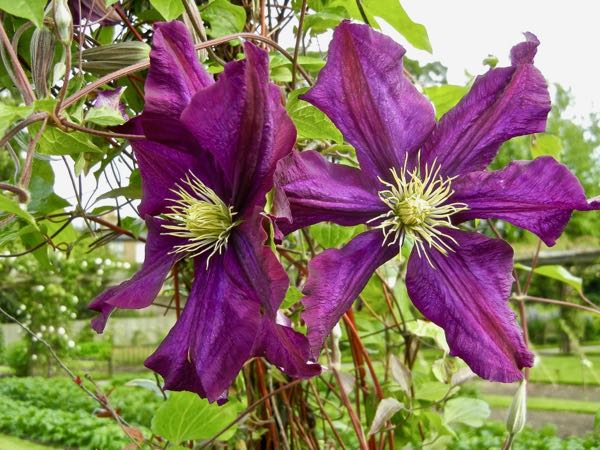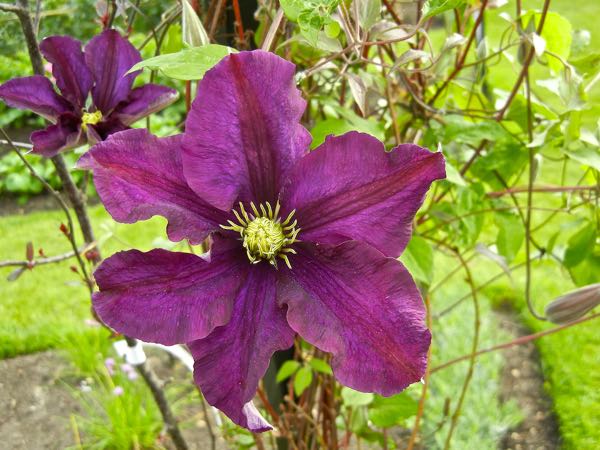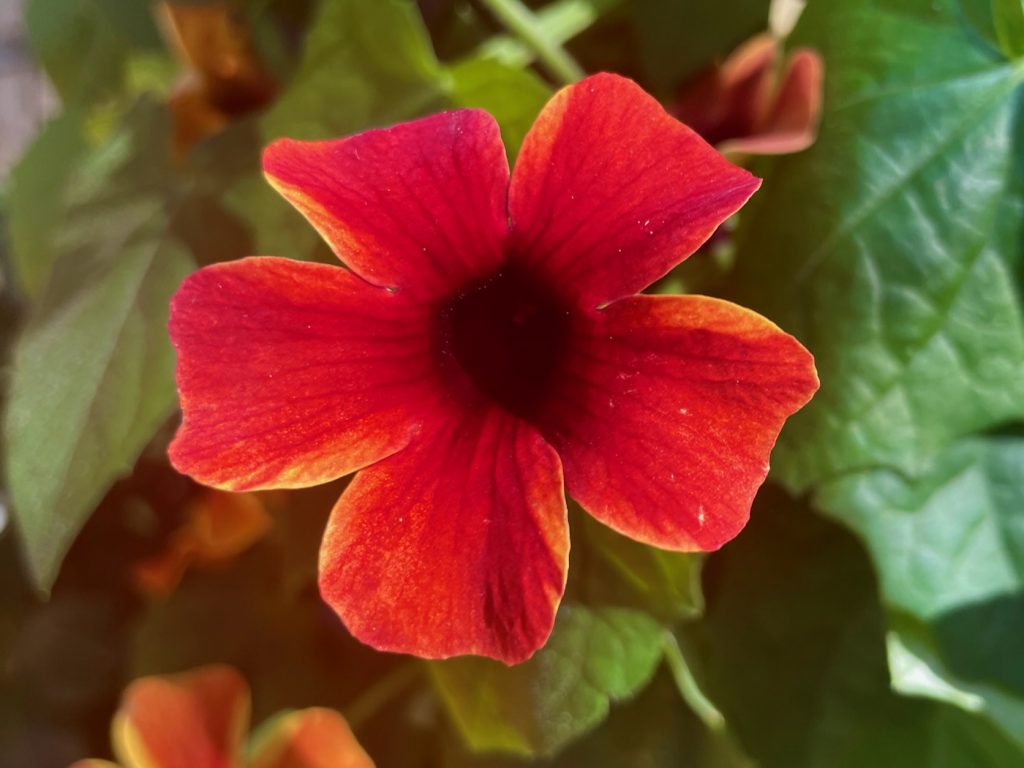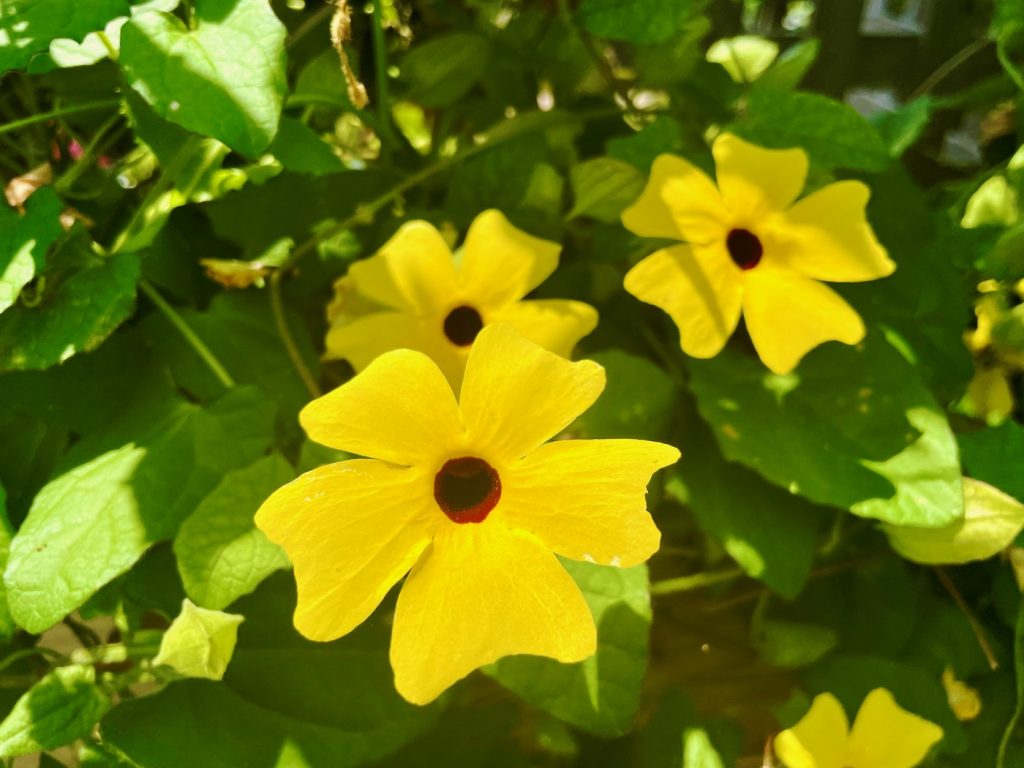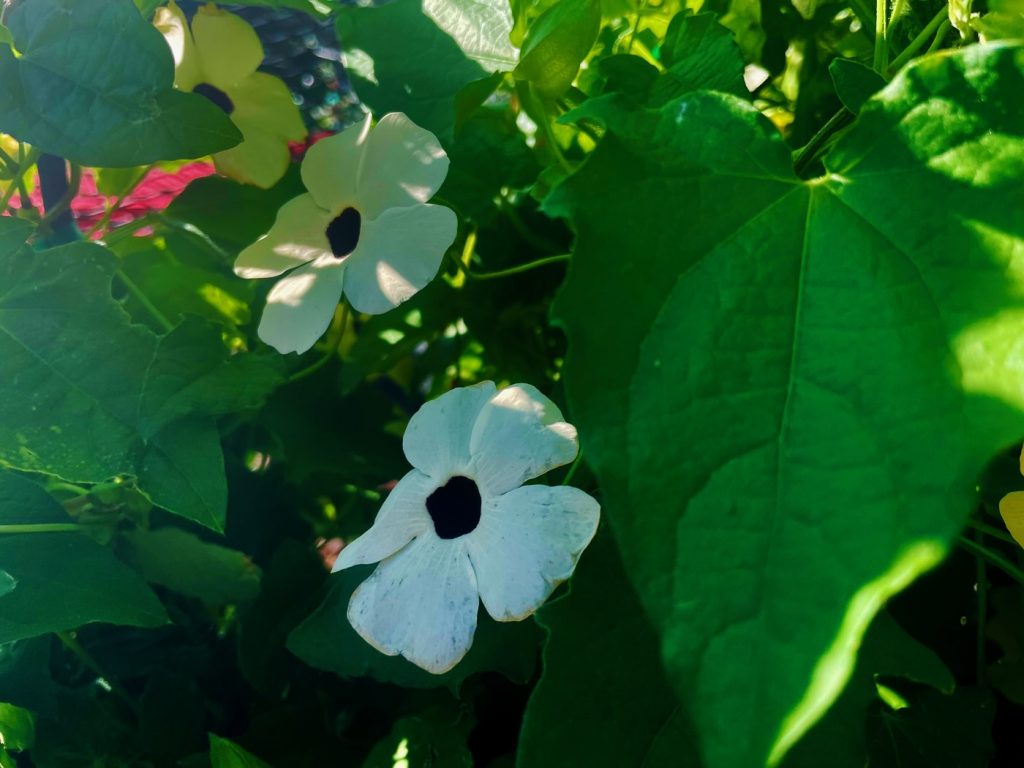Clematis ‘Étoile Violette’ is also known as Clematis viticella ‘Étoile Violette’. It is part of the Ranunculaceae family of plants. Clematis ‘Étoile Violette’ is a fast-growing deciduous climber. Clematis ‘Étoile Violette’ was raised in 1885 in France.
A Charming Climbing Vine
Clematis ‘Étoile Violette’, also known as Clematis viticella ‘Étoile Violette’, belongs to the Ranunculaceae family of plants. This fast-growing deciduous climber originated in France and was raised in 1885. With its striking flowers and vigorous growth habit, Clematis ‘Étoile Violette’ has become a popular choice among gardeners.
Characteristics and Description
Clematis ‘Étoile Violette’ displays medium green pinnate foliage. It is a profuse bloomer, producing abundant single flowers in a deep purple hue. The flowers feature 4 to 6 petals and are adorned with cream-colored stamens. Typically, this clematis variety blooms during the summer months. With its robust growth, Clematis ‘Étoile Violette’ can reach a height of 3.5m or 12ft.
Cultivation of Clematis ‘Étoile Violette’:
To ensure the successful cultivation of Clematis ‘Étoile Violette’, consider the following guidelines:
Sunlight: Grow Clematis ‘Étoile Violette’ in a sunny location, but ensure that the roots are kept cool. The flowering parts of the vine should receive sun to part shade, while the roots benefit from shade.
Watering: This clematis variety prefers alkaline to neutral, moist, and well-drained soil. It is important to keep the soil consistently moist, but not waterlogged. Avoid allowing the soil to dry out.
Soil: Clematis ‘Étoile Violette’ thrives in fertile, well-drained soils. It prefers alkaline to neutral soil conditions.
Pests and Diseases: Watch out for common clematis pests such as aphids, caterpillars, and earwigs. Additionally, be aware of potential diseases including clematis wilt and slime flux. Regularly inspect the plant for signs of infestation or disease and take appropriate measures to control them. It is also important to note that Clematis ‘Étoile Violette’ is toxic to cats, dogs, and horses.
Propagation: This clematis variety can be propagated through semi-hardwood cuttings or layering. Take cuttings during the semi-hardwood stage, or encourage layering by bending a stem to the ground and covering it with soil to encourage root growth.
Pruning: Prune Clematis ‘Étoile Violette’ back in February to promote new growth. It is classified as Group 3 for pruning purposes.
Additional Tips:
- For optimal growth, provide Clematis ‘Étoile Violette’ with fertile, well-drained soil and place it in a location with full sun to part shade. In hot and humid summer climates, such as the St. Louis area, some light afternoon shade can be beneficial.
- Ensure that the roots are kept cool and uniformly moist. You can achieve this by providing shade to the root area through the use of perennials, annuals, or small shrubs. Apply a thick layer of mulch around the base of the plant to maintain soil moisture.
- Be cautious of potential issues such as wilt/stem rot, powdery mildew, leaf spots, rust, and viruses. Regularly monitor the plant for signs of pests or diseases and take appropriate action to mitigate them. Spider mites can also be a potential concern.
- ‘Étoile Violette’ is a small-flowering clematis vine with semi-woody stems. Its deep purple flowers, measuring 3-4″ in diameter, are accentuated by tufts of golden stamens. The foliage consists of pinnately trifoliate leaves that darken as the summer progresses. The name “Étoile” translates to “star” in French, alluding to the captivating beauty of its flowers.
By following these cultivation guidelines and providing proper care, you can enjoy the vibrant beauty of Clematis ‘Étoile Violette’ in your garden.
